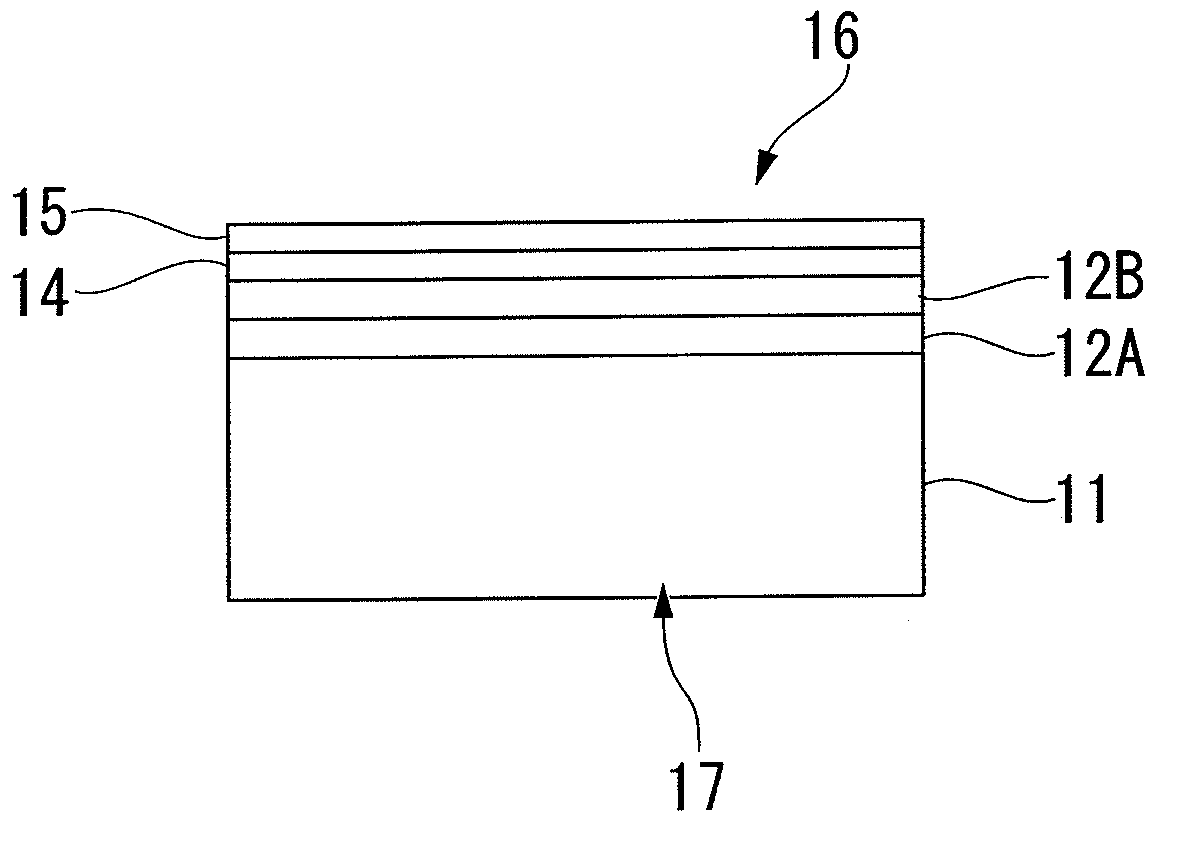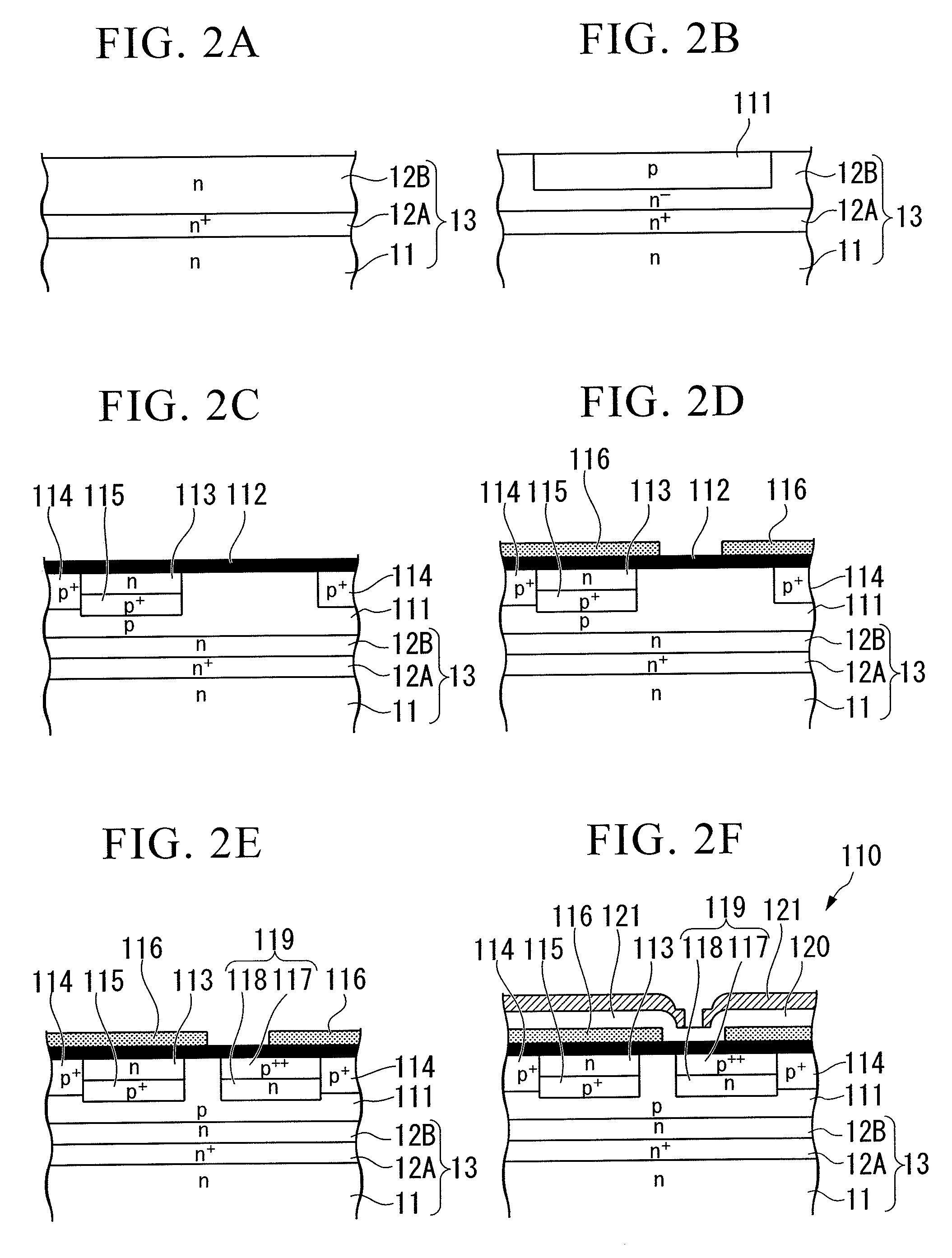Silicon substrate and manufacturing method thereof
a technology of silicon substrate and manufacturing method, which is applied in the direction of crystal growth process, crystal growth process, polycrystalline material growth, etc., can solve the problems of significant deterioration of the electric characteristics of the solid-state imaging device, deterioration of the device characteristics, so as to prevent the reduction of the concentration of carbon, prevent the occurrence of a reduction in the gettering capability, and prevent the effect of carbon concentration
- Summary
- Abstract
- Description
- Claims
- Application Information
AI Technical Summary
Benefits of technology
Problems solved by technology
Method used
Image
Examples
first embodiment
[0056]Hereinafter, a silicon substrate according to a first embodiment of the present invention will be described with reference to the accompanying drawings.
[0057]FIGS. 1A to 1D are front cross-sectional views illustrating a silicon substrate in each step of a method of manufacturing a first silicon substrate according to the first embodiment. In FIGS. 1A to 1D, reference numeral 11 denotes a silicon substrate.
[0058]In order to obtain the silicon substrate 11 shown in FIGS. 1A to 1D, first, polysilicon, which is a raw material of a single crystal silicon, is placed in a vitreous silica crucible, and a predetermined amount of graphite powder is applied on the surface of the polysilicon. At the same time, boron (B) is injected as a dopant, and a CZ crystal having carbon added thereto is pulled up in a hydrogen atmosphere by the Czochralski method (CZ method), which will be described below.
[0059]The CZ crystal is a single crystal silicon that is manufactured by the Czochralski method ...
second embodiment
[0139]Hereinafter, a silicon substrate according to a second embodiment of the present invention will be described with reference to the accompanying drawings.
[0140]The second embodiment of the present invention relates to a second silicon substrate and a method of manufacturing the same, and more particularly, to a technique applicable for a silicon substrate for a solid-state imaging device that can improve gettering capability regardless of a heat treatment of a device step and is used to manufacture a solid-state imaging device.
[0141]FIGS. 7A to 7D are front cross-sectional views illustrating a silicon substrate in each step of a method of manufacturing a silicon substrate according to this embodiment, and FIG. 13 is a flowchart illustrating the method of manufacturing a silicon substrate according to this embodiment. In the drawings, reference numeral 21 denotes a silicon substrate.
[0142]As shown in FIG. 13, the method of manufacturing a silicon substrate according to this embo...
PUM
 Login to View More
Login to View More Abstract
Description
Claims
Application Information
 Login to View More
Login to View More - R&D
- Intellectual Property
- Life Sciences
- Materials
- Tech Scout
- Unparalleled Data Quality
- Higher Quality Content
- 60% Fewer Hallucinations
Browse by: Latest US Patents, China's latest patents, Technical Efficacy Thesaurus, Application Domain, Technology Topic, Popular Technical Reports.
© 2025 PatSnap. All rights reserved.Legal|Privacy policy|Modern Slavery Act Transparency Statement|Sitemap|About US| Contact US: help@patsnap.com



